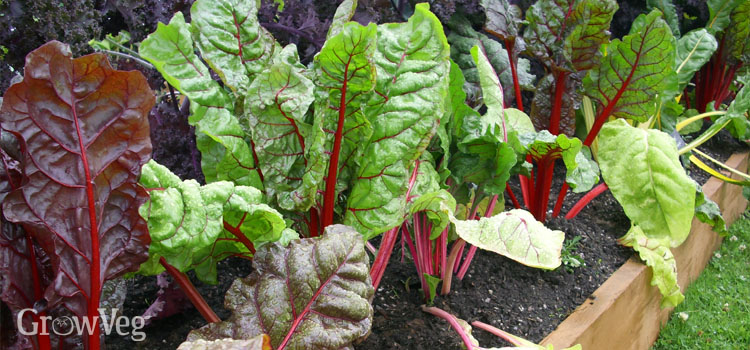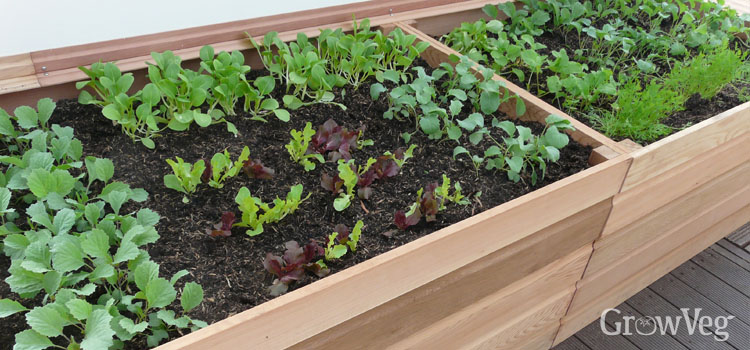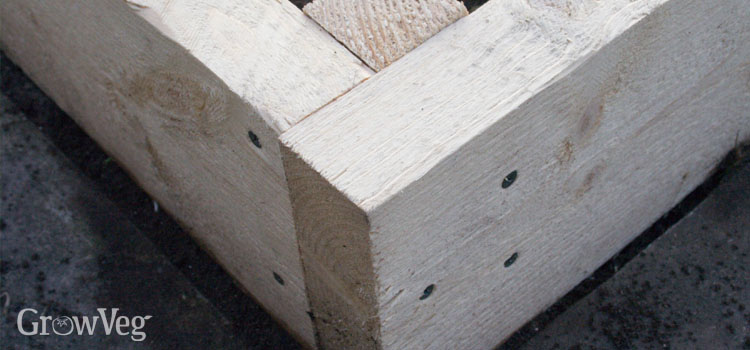What Stain To Use On Cedar Raise Garden Bed From Menards
How to Build Raised Beds for Your Vegetable Garden

Raised beds are extremely popular with gardeners, and it isn't hard to see why. Read on to discover the best location, size and materials for making a bed – and then we'll show you how to build your own!
Where to Site Your Raised Beds
Position your raised bed in a sunny spot and close to the house if you want easy access for weeding and harvesting. Raised beds can be sited on any surface, including paving or concrete.
Our Garden Planner is a great tool for planning the layout and location of your beds. Use the Rectangle Tool or choose one of the Raised Beds from the selection of Garden Objects to give a realistic look to your plan. Beds can be resized using the corner handles and are easily copied and pasted as required. With the beds laid out you can drop in your crops and even mark the layout of drip irrigation, if required.
Optimum Size for Raised Beds
Raised beds are best kept to a maximum of four feet (1.2m) wide. This makes it easy to reach the middle of the beds without stepping on the soil. Beds against a wall or fence should be about 2-3 feet (60-90cm) wide, as you'll only have access from one side. Aim for a minimum height of 6 inches (15cm), while up to a foot (30cm) is ideal for root crops.
Make sure to leave enough space for access between beds. About two feet (60cm) wide is ideal.

Raised Bed Materials
Raised beds can be bought as a kit or built from scratch. Kits are simplest to setup, with treated wood or recycled plastic the most common materials used. Raised-up boxes are perfect for wheelchair users or anyone who is less able to bend.
If you want to make a bed from wood you have three options.
Option 1: Treated Wood
Treated wood has been immersed in chemicals to prevent rotting. Many gardeners prefer to choose more environmentally friendly alternatives derived from natural products.
Option 2: Durable Woods
Woods such as cedar and larch are naturally more durable. The flip side is that they cost a lot more, though they will last for many years.

Option 3: Thicker Boards
2-inch (5cm) thick larch should last at least a decade, even without treatment.
How to Build a Raised Bed
To build your raised bed, screw pre-cut planks together using decking screws. You can overlap the planks by screwing through one board into the end of another, or screw the boards into wooden corner posts. Whichever way you do it, it's easier if you pre-drill the holes in the outer board to one size smaller than the screw diameter.
Fill Your Beds with Rich Soil
Fill your beds with a nutrient-rich mix of compost and soil to ensure optimum growth. With the right mix you shouldn't have to add fertilizer, just a top-up of compost once or twice a year to recharge nutrients for the next crop. Use commercially-produced potting soil if you want to make life easy as the production process kills weed seeds.

Raised Beds Rock!
It's worth recapping why raised beds are invaluable for many gardeners. They allow us to grow almost anywhere and because they're tended from the sides, the soil is never stepped on and should never become compacted. The added depth of a nutrient-rich growing medium often enables crops to be grown a little closer together, which means more food from the same amount of space. And if you have children, raised beds mark the path edges clearly, keeping your crops safer from accidents.

While they initially take time and money to set up, raised beds improve drainage, which means they'll also warm up quicker in the spring – just make sure you stay on top of watering in hot weather. And you have to admit: raised beds can look stunning!
< All Guides
What Stain To Use On Cedar Raise Garden Bed From Menards
Source: https://www.growveg.com/guides/how-to-build-raised-beds-for-your-vegetable-garden/
Posted by: chapmancorgunts.blogspot.com

0 Response to "What Stain To Use On Cedar Raise Garden Bed From Menards"
Post a Comment